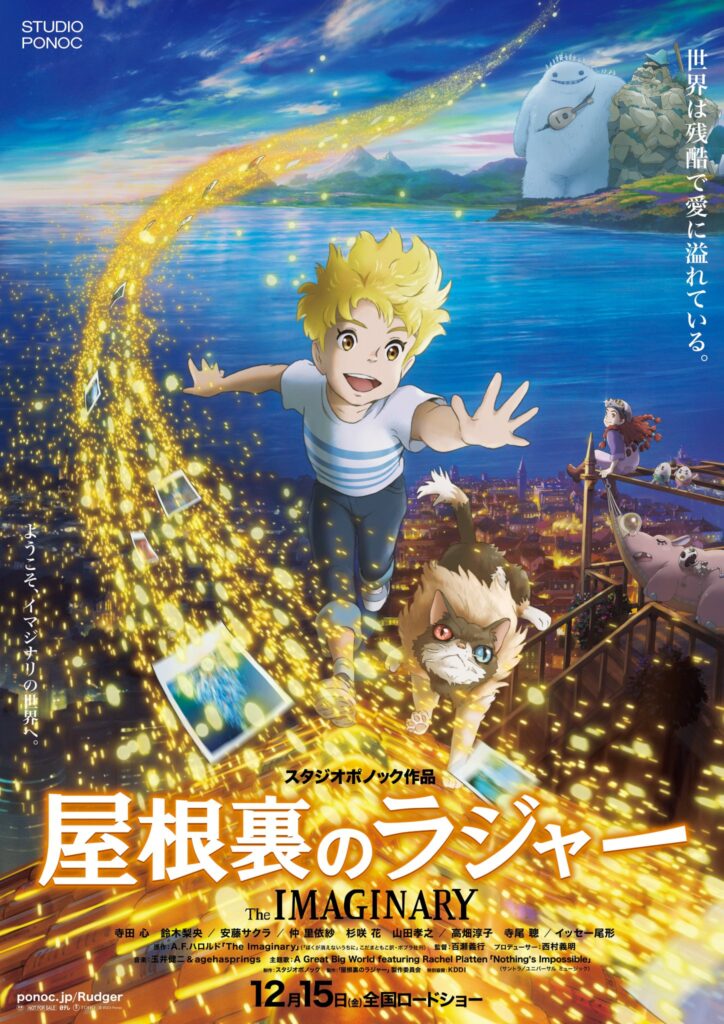
This has been a bizarrely apt year to discuss the morality of beloved animation Icon Hayao Miyazaki, hasn’t it? By extension, this also means it’s prime season for one of anime fanatics’ favorite topics; the long term health (or lack thereof) of the industry as a whole. I am, of course, mainly referring to Miyazaki’s recently released The Boy and the Heron. The film was initially sold as the final outing of the world renowned animation director. He has said it before, but this time, it was certain. This was it. Final. Finito. 終りです。No more Miyazaki movies for you.
Ghibli later announced he was working on a new project at The Boy and the Heron’s premiere.
But the man is 80. Not to be morbid, but it’s certainly not out of the realm of possibility that we have seen his final piece. Anyone paying attention to pre-release interviews or who watched the film itself can tell that it’s not so subtly a partial commentary on Miyazaki’s mortality and even what the future of what he created will be like when he’s gone. Ghibli has left such a cultural footprint that it certainly doesn’t seem totally irresponsible to ask where this type of animated film will come from, in the future.
This leads us to the actual topic of this review, Studio Ponoc, and their new feature The Imaginary. Perhaps it was unfair to preface this review with 2 paragraphs about a completely different animation studio, but it is not like anyone is trying to hide the comparison. Studio Ponoc was founded by former Ghibli animators (in fact, the film was delayed a year while many went back to help old Hayao with The Boy and the Heron.) Their character design and art style is reminiscent of Ghibli’s from the early 2000s. Moreover, both of their feature films have been adaptations of Western children’s novels with magical overtones. (similar to films like Kiki’s Delivery Service, Howl’s Moving Castle, The Secret World of Ariety, or The Tales of Earthsea.) There is nothing wrong with these similarities of course; it’s not like it’s a case of stolen identity. They’re the ones who made those films in the first place. However, this lifted identity is certainly relevant to the types of projects they have made so far, especially The Imaginary.
Like their previous work Mary and the Witch’s Flower, the film is based on a fantastical Children’s book, in this case, A.F. Harold’s The Imaginary. Having read the book before I saw the film, I can say it sticks remarkably faithful to the original story. However, visually the depth of influences balloons up to include films like Spirited Away, Ponyo, and even Pixar films such as Inside Out.
The story of the novel and film revolves around Rudger, an Imaginary friend. We follow Rudger’s adventures with his real life friend Amanda, and later other imaginary friends he meets in a mysterious Library. Reading through the children’s I was torn in two by just how perfectly lined up down the middle the story was for a Ghibli-esque adaptation, with how fundamentally the tones differ in execution. Watching the final product ended up with this exact dichotomy, that makes it both a bit awkward but undeniably fascinating.
The main tonal difference comes in terms of narrative scale and an overall melodrama. The novel can be quite dramatic when it wants to be, but overall there is a more lackadaisical tone to the proceedings. It does dive into the expected ruminations on childhood innocence, imagination, and growing up, but it next dips into melodrama. The film on the other hand plays its hand pretty a bit much at points. This is where the Pixar comparison comes in. There are some weepy moments here, and the filmmakers know what they are and are not in the least bit afraid to take advantage of them.
One of the key scenes in the film is directly about Amanda’s deceased father. We get a flashback, sad music plays, and many tears are shed on screen. In fact, the role of the father is expanded greatly, in that is the key emotional crux of all the core protagonists’ relationships. Compare this to the original novel, where the dead father is mentioned, but only once, and used as background information. Any pathos or emotional motivation is left purely to interpretation. This isn`t the only scene. Throughout the film, there are these moments that probably should have remained understated, but are given an underline and three exclamation points on screen.
This tendency to go BIG is not strictly an issue though. Especially when it comes to the presentation. The book had a very Shel Silverstein style of creativity. There was a matter of fact mundanity to it. For example when Rudger enters a magical “Imaginary friend library” the artwork and descriptions still show it as a normal public library. Just with Imaginary monsters walking around. In the film, on the other hand, the library becomes a huge Italian city when the lights go out. With big buildings, shops, and thousands of fantastical creatures. It is very reminiscent of the bathhouse in Spirited Away.
Whenever the “imaginary” world is on display, it becomes a true talent showcase for the animators involved. The ordinary world shifts into the extraordinary before your eyes, and the level of ingenuity and expressiveness is awe inspiring at times. The film is also very good at building a creepy atmosphere with the antagonist Mr. Bunting. Critiques of style aside, this is a hyper-competent piece of family entertainment that is bound to surprise and delight you quite often. It is maybe a shame it comes on the heels of The Boy and the Heron because that does put into stark contrast the few issues the film has. It does sometimes come across as a Ghibli light; but let’s be honest, that’s a pretty impressive silver medal to have.